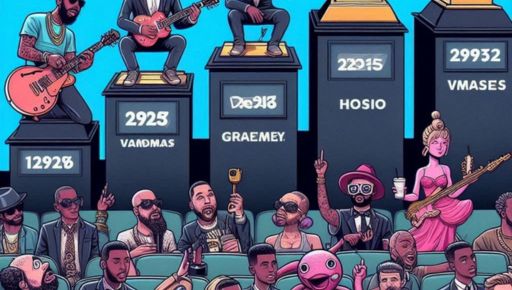
Music award shows have long been a spectacle of glitz, glamour, and unforgettable performances. From the elegant, black-tie affairs of the Grammys to the unpredictable chaos of the MTV Video Music Awards (VMAs), televised music awards have transformed dramatically over the years. These events aren’t just about handing out trophies—they’ve become cultural milestones, where music, fashion, and controversy collide. Let’s dive into how these shows have evolved, the moments that defined them, and the impact they’ve had on pop culture.
The Early Days: A Class Act
The Grammys, first held in 1959, were designed to honor the achievements of artists in a formal, almost business-like setting. The show was all about the music, and the focus was on recognizing artistic merit over flash. You wouldn’t see any wild outfits or stage antics here. It was an elegant affair where artists like Frank Sinatra and Ella Fitzgerald were celebrated for their contributions to music.
The early Grammys helped set the stage for music award shows to come, emphasizing musical excellence and creating a sense of prestige around the event. Back then, it wasn’t about going viral or grabbing headlines—it was about respect and tradition.
As television grew in popularity, so did the desire to make these shows bigger and more entertaining. Performances became a key part of the broadcast, slowly turning the Grammys into a spectacle rather than just an awards ceremony.
The Rise of the VMAs: Unpredictable and Unapologetic
If the Grammys were the buttoned-up award show, the MTV Video Music Awards (VMAs) were the cool, rebellious cousin. Launched in 1984, the VMAs quickly became known for their wild, anything-can-happen atmosphere. Unlike the Grammys, which honored traditional musical achievements, the VMAs were all about celebrating the art of music videos, which exploded in popularity thanks to MTV.
From the very beginning, the VMAs embraced controversy and spectacle. Take the very first VMAs, where Madonna shocked audiences with her performance of “Like a Virgin” in a wedding dress. It was a sign of things to come. Over the years, the VMAs have given us some of the most iconic moments in pop culture history, like Britney Spears performing with a snake, Beyoncé revealing her pregnancy on stage, and Kanye West interrupting Taylor Swift’s acceptance speech.
Where the Grammys built their reputation on honoring the art of music, the VMAs capitalized on the drama surrounding it. It wasn’t just about the awards—it was about who would steal the spotlight.
Music Meets Fashion: Awards as Trendsetters
One of the biggest shifts in music award shows has been their influence on fashion. What stars wear to these events is almost as important as the awards themselves. Red carpets became fashion runways where artists could express their personalities, push boundaries, or, in some cases, leave audiences stunned.
Think about Lil’ Kim’s one-sleeve purple jumpsuit with a pasty at the 1999 VMAs or Lady Gaga’s infamous meat dress in 2010. These weren’t just fashion choices—they were statements. Music award shows became stages for artists to make bold moves, whether through their outfits or their performances. The Grammys may have started with classic tuxedos and ball gowns, but by the 2000s, the red carpet had become a battleground for who could wear it best—or weirdest.
Iconic Performances: More Than Just Music
Some of the most memorable music moments have come from live performances at these shows. From Whitney Houston’s flawless rendition of “I Will Always Love You” at the Grammys to Beyoncé’s visual masterpiece performance at the 2016 VMAs, these performances often steal the show.
The performances aren’t just for entertainment—they’re pivotal moments in an artist’s career. Take Michael Jackson’s 1988 Grammys performance of “The Way You Make Me Feel” and “Man in the Mirror.” He didn’t just sing the songs; he created a moment that solidified his legacy as the King of Pop. Similarly, Prince’s electrifying guitar solo at the 2007 Super Bowl halftime show, though not part of an awards show, demonstrated the power of live television performances to create unforgettable moments.
Many of these performances have become timeless. They’re the ones we replay, discuss, and reference years later, often more than who actually won the awards.
The Digital Shift: Audience Participation
In today’s world, music award shows aren’t just about sitting back and watching. With the rise of social media, audiences have become active participants in these events. Voting for fan-favorite categories, live-tweeting reactions, and creating viral memes have all become part of the experience. The VMAs, in particular, have embraced the digital age, offering fans a chance to vote for their favorite artists and making the audience feel more connected to the show.
From the polished elegance of the Grammys to the bold unpredictability of the VMAs, music award shows have come a long way. They’ve evolved from simple award ceremonies into cultural events that influence everything from fashion to online trends. Whether it’s a stunning performance or a jaw-dropping fashion statement, these shows continue to shape how we experience music in the modern age—one performance, and sometimes one theme song, at a time.
